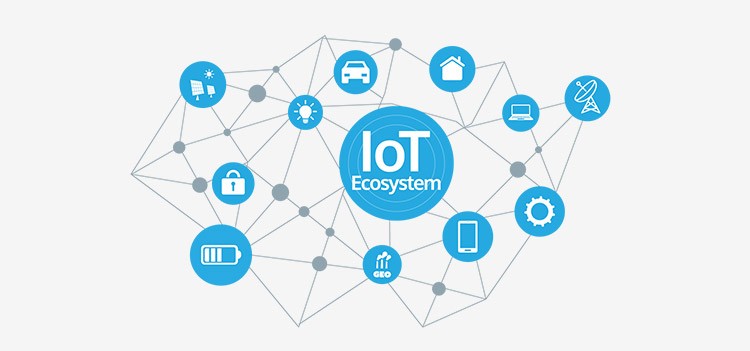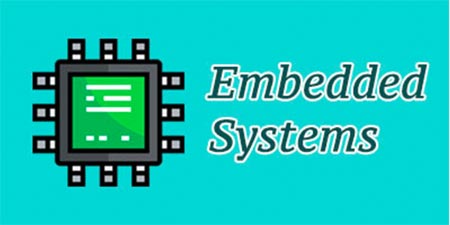KEA to introduce major changes in KCET 2025 May 13, 2024
JEE Advanced 2024 April 19, 2024
Management Aptitude Test (MAT) May 2024 April 11, 2024
UGCET 2024: Latest Update February 22, 2024
PGCET 2023 - Final Round Schedule and Instruction February 22, 2024
COMEDK 2024 February 22, 2024
Jain University UG JET 2024 February 21, 2024
Christ University MBA 2024 February 21, 2024

Last updated: 18 Oct 2021
Electronics is the branch of science that deals with the study of flow and control of electrons and the study of their behaviour and effects in vacuums, gases and semiconductors of electrons and electronic devices. Electronics is the combination of physics, engineering, technology and applications that deal with the emission flow and control of electrons in vacuum and other mediums.
Electronics is widely used in information processing, telecommunication and signal processing. The ability of electronic devices to act as switches makes digital information-processing possible, interconnection technologies such as circuit boards, electronics packaging technology and other varied forms of communication. Electronics play an important role in many pieces of household components. The basic electronics comprises minimal “electronics equipment” and it deals with the effects of electrons in day to day life. The electronics also deals with study of resistors, transistors, capacitors, diodes, inductors and transformers.

Embedded Systems: The embedded system is a combination of computer hardware and software designed for a specific function or functions within a larger system. The systems can be programmable or with fixed functionality. Industrial machines, consumer electronics, agricultural and process industry devices, automobiles, medical equipment, cameras, household appliances, airplanes, vending machines and toys, as well as mobile devices, are possible locations for an embedded system.
Industrial IoT: The Industrial Internet of Things (IIoT), also known as the Industrial Internet, brings together brilliant machines, advanced analytics, and people at work. It’s the network of a multitude of industrial devices connected by communications technologies that results in systems that can monitor, collect, exchange, analyze, and deliver valuable new insights like never before. These insights can then help drive smarter, faster business decisions for industrial companies.
By combining machine-to-machine communication with industrial big data analytics, IIoT is driving unprecedented levels of efficiency, productivity, and performance. And as a result, industrial companies in original equipment manufacturing, chemicals, food and beverage, automotive, steel, and many other industries are experiencing transformative operational and financial benefits.
B.Tech/BE Electronics & Communication- Embedded Systems & industrial IoT is an undergraduate course that is divided into 8-semesters. The course provides the basic knowledge in Electronics & Communication and some advanced concepts in embedded systems and IoT.
The course gives a detailed understanding of embedded systems and industrial IoT. The course trains the students on various systems that follow embedded systems and also gives a detailed understanding of the IoT systems that are used in industries.
The students who have passed PUC or 10+2 with a science background can join B.Tech/BE courses. The students interested in joining B.Tech courses are required to qualify competitive exams like CET/COMED-K/JEE with high marks in order to get merit seats in various colleges.
The students with relevant qualifications can join B.Tech/BE courses by two modes. The first one is Merit based admission and the second one is Direct admission.
Let’s discuss in detail
The students who are interested to join B.Tech/BE Electronic & Communication-Embedded Systems & Industrial IoT degree should mandatorily appear for CET/COMED-K/JEE or institutional-based entrance exams and undergo counselling to choose their desired colleges for merit seats. The engineering college allotts the merit seats to the students according to their rankings and marks obtained by them in their entrance exams and marks scored in PUC or 10+2.
There are two types of counselling for the B.Tech/BE students
1. Karnataka Examination Authority (KEA) Counselling
The students who are interested to join the government engineering colleges and other engineering colleges affiliated to the government should undergo the counselling procedures of Karnataka Examination Authority (KEA).
The students who intend to join for the merit seats under government quota are required to complete the counselling procedures and join for the B.Tech/BE programmes in their chosen colleges. The Engineering colleges under the Karnataka Examination Authority (KEA) are affiliated to the Visveswaraya Technological University (VTU).
2. COMED-K Counselling
The students who are interested to join the private autonomous engineering colleges and deemed universities that are affiliated to All India Council of Technical Education (AICTE) are required to apply for the COMED-K counselling procedures. The students should qualify the COMED-K counselling procedures to get admission to their desired private autonomous engineering colleges or deemed universities for Engineering programmes.
The students have another option of getting admission to B.Tech/BE Electronics & Communication-Embedded Systems & Industrial IoT course by direct admission process. Under this mode of admission, the students are given direct admission to their desired colleges under management quota. The direct admission students enjoy many special privileges like that they are not required to apply for any entrance exam for getting admissions. They have an option to choose their desired colleges and universities and book their seats in advance even before the starting of the academic year. The students who are interested in direct admissions are required to contact Galaxy Educational Services for more details.

The students of B.Tech/BE Electronics & Communication- Embedded Systems & industrial IoT will be studying the following subjects during their course duration
| Sl No | Subjects of Study |
|
1. |
Network Synthesis and Analysis |
|
2. |
Chemistry |
|
3. |
Mathematics |
|
4. |
Electrical Engineering |
|
5. |
Fields & Waves |
|
6. |
Electromechanical Energy Conversion |
|
7. |
Data Structures |
|
8. |
Techniques of Computation |
|
9. |
Hardware Design |
|
10. |
Antenna and Wave propagation |
|
11. |
Basic Electronics Engineering |
|
12. |
Signals |
|
13. |
Digital Communication |
|
14. |
Analog Communication |
|
15. |
Satellite Communication |
|
16. |
Microprocessors |
|
17. |
Analog Transmission |
|
18. |
Wave Progression |
|
19. |
Microwave Engineering |
|
20. |
Digital Electronics |
|
21. |
Advanced Electronics & Communication Engineering |
|
22. |
Communication Management |
|
23. |
Signals & Systems |
|
24. |
Digital Transmission |
|
25. |
Signal Processing and Management |
|
26. |
Electronics Measurement & Instrumentation |
|
27. |
Embedded Systems Design |
|
28. |
Digital Control Systems |
|
29. |
System on Chip Architecture |
|
30. |
Embedded Programming |
|
31. |
Digital System Design with PLDs |
|
32. |
Advanced Data Communications |
|
33. |
Advanced Signal Processing |
|
34. |
VLSI Technology & Design |
|
35. |
Coding Theory and Techniques |
|
36. |
Speech and Audio Signal Processing |
|
37. |
Reliability Engineering |
|
38. |
Intelligent Control |
|
39. |
Sensors and Actuators |
|
40. |
Embedded Real-Time Operating Systems |
|
41. |
Advanced Computer Architecture |
|
42. |
Scripting Languages |
|
43. |
Design of Fault Tolerant Systems |
|
44. |
Embedded Networks |
|
45. |
Image and Video Processing |
|
46. |
Hardware- Software Co-Design |
|
47. |
Ad-Hoc and Wireless Sensor Networks |
|
48. |
Digital Signal Processors and Controllers |
|
49. |
Modern Control Theory |
|
50. |
Optimization Techniques |
|
51. |
Robotics |
|
52. |
Network Security & Cryptography |
|
53. |
Mobile Computing |
|
54. |
High Speed Networks |
|
55. |
IoT Machines |
|
56. |
Introduction to Artificial Intelligence |
|
57. |
IoT and Smart Sensors |
|
58. |
Wireless Sensor Networks |
|
59. |
IoT Architecture and Protocols |
|
60. |
IoT with RFID and Microcontrollers |
The B.Tech/BE Electronics & Communication-Embedded Systems & Industrial IoT students are in great demand in recent years. With the advent of the internet and connected platforms, skilled professionals are hired in large numbers by various organisations.
The fresh B.Tech/BE Electronics & Communication-Embedded Systems and Industrial IoT students will be earning around 5 lakhs to 10 lakhs per annum. The experienced professionals will be earning around 10 lakhs to 15 lakhs per annum.
Some of the organisations hiring B.Tech/BE Electronics & Communication-Embedded Systems & Industrial IoT students are:
Some of the jobs available are:
Embedded Application Software developer: The embedded application software developers are required to develop application software that would run on embedded processors and microcontrollers. As an embedded application software developer, one needs a good understanding of embedded processors like ARM, PowerPC etc. Application development for these processors counts towards one's experience. Application development can also refer to software development for DSP processors like those from Texas Instrument
Printed Circuit Board (PCB) designer: The printed circuit board designers are required to design a PCB. As a printed circuit board designer, one should be familiar with schematics capture (say using OrCAD), have an understanding of component selection (microprocessor/controller, power supply IC, connectors, voltage regulators, level shifters, clock generators etc.) as per design requirements. He/she should also know PCB stack up (how many layers etc.) and some idea of PCB routing.
System Architecture developer: The overall system architecture development or specification is generally done by a system architect or someone with significant experience. These are the guys who may generally interact with a client and set up the overall system requirements. At many places, a project leader or a project manager will be significantly involved in this place.
Grid Modernization Engineer: Smart grid engineers are required to maintain the network grids that are connecting worldwide. They are required to contend with the challenges introduced by solar and wind power. These systems generate power only when the sun is shining and the wind is blowing, so their unpredictability can lead to grid instabilities.
Wearable Tech Designer: The wearable tech designers are required to develop wearable equipment and software for consumers. The Wearable tech designers need to stay up to date on products with the greatest potential for mobile computing. And they need a keen eye for cutting-edge textile trends, too. A successful combination of the two could create the next big portable computing trend.

The embedded systems and industrial IoT is the next level in the technology and is ready to create a revolution in the field of technology. The organisations are adapting these techniques and are in need of skilled B.Tech/BE Electronics & Communication- Embedded Systems & Industrial IoT students in large numbers. They are well paid and can expect tremendous growth in the field in the next few years. The students with a passion towards embedded systems and IoT can join this course.
At Galaxy Education, we help you through the process of finding and applying to the right Colleges in Bangalore. Contact us in below details to get more
information on admission procedure and how to secure your seat:
Please wait, we are submitting your enquiry...